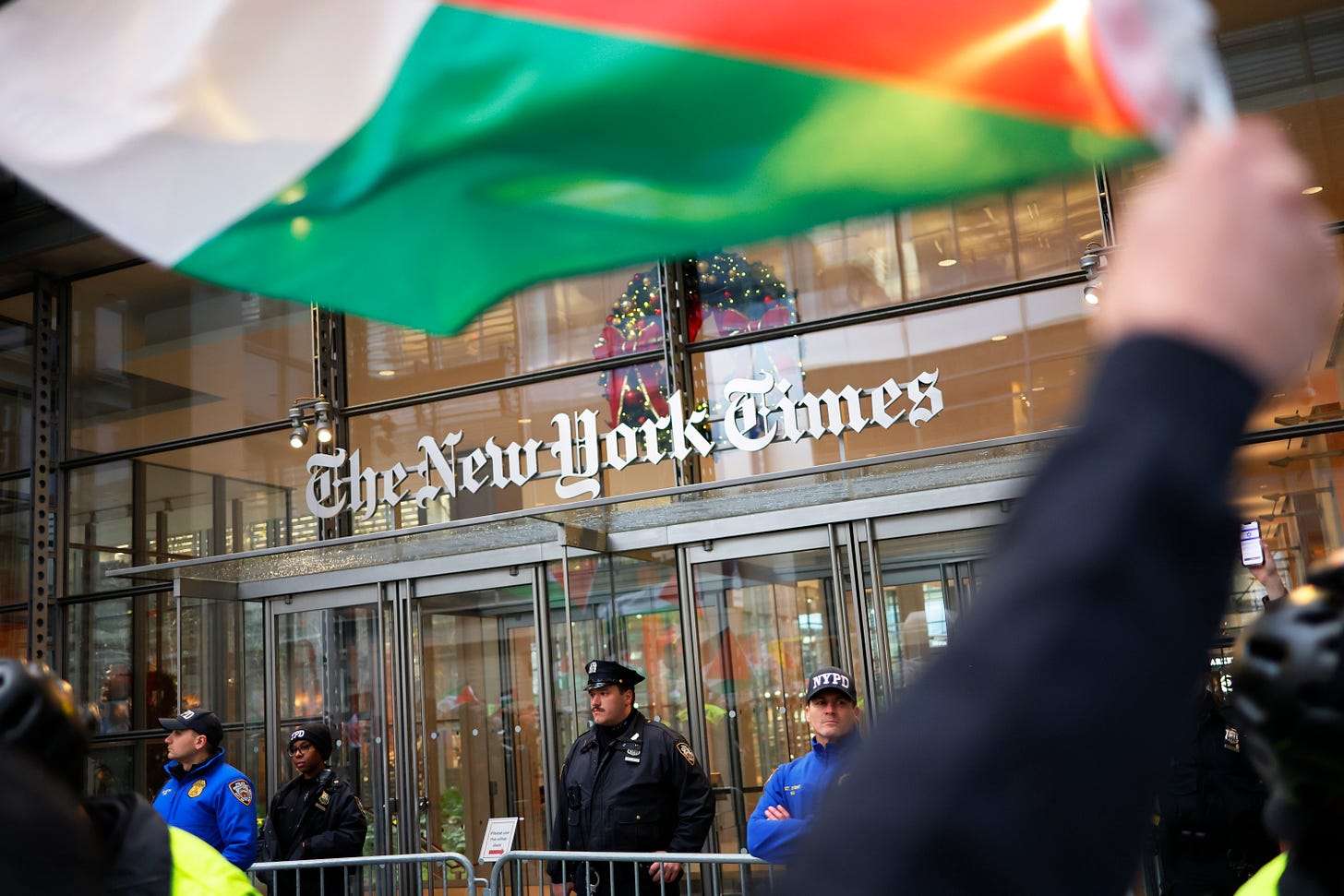Last week, there was drama at the New York Times.
Of course, there’s always drama at the Times; it seems baked in to this large, dominant and influential news organization. I experienced that often when I was the paper’s public editor, or reader representative, from 2012 to 2016.
But this episode had some especially troubling elements. At its heart are questions about the credibility of a shocking Times story, published in late December, in the wake of the horrific Oct. 7 attack on Israel.
The front-page story revealed a pattern of rape, mutilation and extreme brutality against Israeli women and said that Hamas had “weaponized sexual violence” as part of the attack.
But the family of one woman who was killed in the Oct. 7 attack, and whom the story reported apparently had been raped, questioned aspects of the reporting. And a freelancer who helped report the story was found to have shown her approval, on social media, of the idea of turning the Gaza strip into “a slaughterhouse.”
Both The Intercept and the Daily Beast reported on this, noting that some members of the Times’s own staff had questioned aspects of the story, and that the popular Times podcast, The Daily, had decided to shelve an episode based on the sexual-violence story.
Then, as a result of all this negative publicity, The Times launched an internal newsroom investigation into who had talked to outside journalists — a story that Vanity Fair’s Charlotte Klein broke.

Yes, a leak investigation inside the New York Times. That’s an unusual and heavy-handed measure. According to the newsroom union, which strongly objected to the investigation, some Times employees were ordered to “hand over the names of all the active members” of an affinity group for MENA (Middle Eastern and North African) employees. The union said that management “demanded copies of private text-message conversations between colleagues about their shared workplace concerns.”
The NewsGuild charged that those employees had been “targeted for their national origin, ethnicity and race.” The Times has denied that vehemently, saying that most of those who’d been interviewed were not members of the MENA affinity group, and that the investigation was necessary because revealing internal information “crosses a clear red line.”
As I told Laura Wagner of the Washington Post: I can understand why Times management is unhappy with having the internal workings of their editorial process made public, but pursuing a leak investigation runs counter to the ethos of reporting and transparency that you’d expect from a major news organization.
After all, many reporters depend heavily on confidential sources and assure those sources that they’ll have the paper’s protection for their candor. What message does it send, then, to see the paper attempting to play plumber to leaks from their own newsroom? (Here’s a gift version of Wagner’s story in the Post with all the background.)
I’m glad reporters for various news outlets are shedding light on these questions — both about the original story itself and the leak investigation — especially since The Times eliminated its public editor position in 2017, about a year after my term was up. The readers deserve to know what’s happening.
I think the Times should be doing an investigation, but not about who on their staff has been leaking. It should be scrutinizing its own reporting practices, particularly with respect to the vetting of freelancers, and then reporting to its readers about the findings. A model of how this can be done is Washington Post ombudsman Bill Greene’s extensive and meticulous reporting on a story gone wrong many years ago — when he wrote about how in 1980 the Post infamously published a made-up tale, “Jimmy’s World,” about an 8-year-old heroin addict. Green’s report took up multiple pages in the Post, and while it couldn’t take back the travesty of publishing that article, it at least provided some accountability.
I’m not suggesting that the Times’s Gaza reporting is so deeply flawed, or anything close to it. Much of it has been exemplary. And I’m certainly not suggesting that terrible sexual violence against Israeli women and girls wasn’t an element of the attack on Oct. 7.
But every detail matters in such an explosive story. Now that credible questions have been raised — including by the family of one of the supposed rape victims — it’s not enough to say, in effect, “trust us.”
Thanks to all the subscribers here, and a particular welcome to new ones. I appreciate your interest and support, and I am always interested in your comments. Please know I read them all, and respond to at least some in each post.
Separately, those of you who are concerned, as I am, about the media’s relentless over- coverage of President Biden’s age, might be interested in my conversation with CNN’s Christiane Amanpour, which aired over the weekend. Here’s the clip.
Meanwhile, Trump’s memory lapses and gaffes — not to mention his anti-democratic vision for his next term — seem to go almost unnoticed in the mainstream media. As I said on CNN: I wonder whether people are as aware of Trump’s authoritarian plans as they are of Biden’s age.
We all know the answer to that one.






Given the numerous problems at the NYTimes, including the myopic #ButHisAge coverage there, I think it's long past time they got a serious comeuppance. Clearly, they haven't learned their lessons from the last 8 years on how NOT to produce journalism.
This weekend's sensationalist headlines driven by an antiBiden 980 person Fake News Times poll is the latest effort by some of the paper's most arrogant journalists, analysts and media performers to aggragate to themselves the rights to decide who the Democrats should run for President.
Really? Who do these people think they are and how long do they think millions of us will keep our subscriptions up to pay them for dangerous falsehoods.